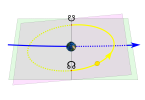Basketball is a sport that has captivated millions of people around the world. It is a game that requires a combination of skills such as dribbling, shooting, and passing. One of the most important techniques in basketball is the pick and roll. This technique is used by players to create space for themselves or their teammates to shoot, drive, or pass.
The pick and roll is a basic offensive play that involves two players. The first player, also known as the screener, sets a screen by standing in the way of the defender of the second player, also known as the ball handler.
The ball handler then dribbles towards the screen, forcing the defender to make a decision. If the defender tries to go around the screen, the ball handler can use this opportunity to drive to the basket or take a shot. If the defender tries to go over the screen, the ball handler can pass the ball to the screener, who is now open for a shot.
Basics of Pick and Roll
Pick and roll is a common basketball play that involves two players from the same team. The basic idea is that one player (the “picker”) sets a screen for the other player (the “roller”) to get open for a shot or drive to the basket. Here are the basics of pick and roll:
- The picker sets a screen by standing in the way of the defender guarding the roller. The picker can either stand still or move towards the defender to create more space for the roller.
- The roller then uses the screen to get open. They can either roll to the basket or pop out for a jump shot.
- The defender guarding the roller has to choose whether to stay with the roller or switch and guard the picker. This decision can depend on the defender’s skill level, the offensive players’ strengths, and the game situation.
- If the defender switches, the picker can then roll to the basket or pop out for a jump shot.
Pick and roll is often used as a way to create mismatches on the court. For example, if a smaller defender is guarding the roller, the offense can use the pick and roll to switch the defender onto a larger offensive player. This can create a scoring opportunity for the offense.
Overall, pick and roll is a simple but effective play that can be used in a variety of situations. By setting screens and using them to get open, players can create scoring opportunities and make it harder for the defense to stop them.
Origin and History of Pick and Roll
The pick and roll is a fundamental basketball play that has been used in the sport for several decades. It involves two players, one setting a screen (pick) for the other, who then runs off the screen and receives a pass from the teammate who set the screen. This play is often used to create space for the ball handler and to get a better shot or passing angle.
The pick and roll play was first introduced in the 1940s by Clair Bee, a college basketball coach. However, it wasn’t until the 1960s and 1970s that the pick and roll became a popular and effective play in the NBA.
This was due in part to the emergence of players like Jerry West, who was known for his ability to use the pick and roll to create scoring opportunities for himself and his teammates.
During the 1980s, the pick and roll became even more popular, thanks in large part to the success of the Los Angeles Lakers and their star player, Magic Johnson.
Johnson was known for his ability to run the pick and roll to perfection, and he helped lead the Lakers to several NBA championships during the decade.
Today, the pick and roll remains an essential part of basketball strategy. Teams at all levels of the sport use this play to create scoring opportunities and to keep their opponents off balance.
While the basic principles of the pick and roll remain the same, coaches and players continue to develop new variations and strategies to keep the play effective and unpredictable.
Key Roles in Pick and Roll
The Ball Handler
The ball handler is typically the point guard or the player who is best at handling the ball. In the pick and roll, the ball handler’s job is to dribble towards the screen and use it to create separation from the defender. They must also be able to read the defense and make quick decisions about whether to shoot, pass, or drive to the basket.
The ball handler must have good ball control and be able to change direction quickly. They should also be able to shoot accurately from mid-range and three-point range to keep the defense honest.
The Screen Setter
The screen setter is usually a big man or a forward who can set a solid pick and roll to the basket. Their job is to create space for the ball handler by standing in the way of the defender and forcing them to go around the screen.
The screen setter must have good footwork and be able to roll to the basket after setting the screen. They should also have good hands and be able to catch passes from the ball handler.
In addition, the screen setter must be able to read the defense and adjust their pick and roll accordingly. If the defense switches or double-teams the ball handler, the screen setter must be able to slip the screen or pop out for a jump shot.
Overall, the key roles in pick and roll are the ball handler and the screen setter. They must work together to create scoring opportunities and keep the defense off balance. With good communication and execution, the pick and roll can be a deadly weapon in any team’s arsenal.
Execution of Pick and Roll
Setting the Screen
To execute a pick and roll play, the first step is to set the screen. This involves a player, usually a big man, standing in the path of the ball handler’s defender, preventing them from following the ball handler. The screen should be set at an angle that forces the defender to go around it, creating an opening for the ball handler to drive to the basket.
The timing of the screen is crucial, as the ball handler needs to have enough time to take advantage of the opening created by the screen. The screener should wait until the ball handler is in position before setting the screen, and then quickly roll towards the basket to receive a pass.
Using the Screen
Once the screen is set, the ball handler can use it to create space and drive towards the basket. The ball handler should dribble towards the screen, using it as protection from the defender. The ball handler can then choose to drive towards the basket or pass to the rolling screener.
The screener should roll towards the basket, creating a passing lane for the ball handler. The screener should also be ready to catch a pass and finish at the basket if the defender switches onto the ball handler.
Overall, the pick and roll play is an effective way to create scoring opportunities in basketball. By setting a well-timed screen and using it effectively, players can create openings and drive towards the basket.
Strategies in Pick and Roll
On-Ball Strategy
When executing a pick and roll on the ball-handler, the screener should set a solid screen to prevent the defender from getting through. The ball-handler should then look for an opening to either drive to the basket or pass to the screener who has rolled to the basket.
If the defender switches onto the screener, the ball-handler should take advantage of the mismatch and attack the defender. If the defender fights through the screen, the screener can slip the screen and roll to the basket for an open shot or lob pass.
Off-Ball Strategy
In off-ball pick and roll situations, the screener should set a screen on the defender guarding the ball-handler. The ball-handler should then use the screen to create separation and get open for a pass or shot.
If the defender switches onto the ball-handler, the screener should roll to the basket for an open shot or lob pass. If the defender fights through the screen, the ball-handler can use the screener as a decoy and attack the basket.
It’s important for both the ball-handler and screener to be aware of the defense and make quick decisions based on how the defense reacts. Communication and timing are key in executing successful pick and roll plays.
Defending Against Pick and Roll
Switching
Switching is a defensive strategy where the defender guarding the screener switches to guard the ball handler, and the defender guarding the ball handler switches to guard the screener.
This strategy is effective when the defenders are of similar size and skill level. Switching can prevent the ball handler from driving to the basket or passing to the screener, but it can also create mismatches.
Hedging
Hedging is a defensive strategy where the defender guarding the screener steps out to slow down the ball handler, and then recovers back to the screener.
This strategy is effective when the defender guarding the screener is quick and can recover quickly. Hedging can prevent the ball handler from driving to the basket, but it can also leave the screener open for a pass.
Trapping
Trapping is a defensive strategy where two defenders trap the ball handler, and the defender guarding the screener rotates to cover the open offensive player.
This strategy is effective when the ball handler is not a good passer or when the screener is not a good shooter. Trapping can force turnovers, but it can also leave other offensive players open.
When defending against pick and roll, it is important to communicate with teammates and anticipate the offensive play. Defenders should also be aware of the shot clock and the game situation.
By using a combination of switching, hedging, and trapping, defenders can effectively defend against pick and roll and limit the offensive options.
Influence of Pick and Roll in Modern Basketball
Pick and roll is a fundamental offensive strategy in basketball that has gained immense popularity in recent years. It involves a player setting a screen for the ball handler, who then uses the screen to get past the defender and drive towards the basket or take a jump shot. This strategy has become a staple in modern basketball, and its influence can be seen in various aspects of the game.
One of the primary benefits of the pick and roll is that it creates space on the court. By setting a screen, the offensive player forces the defender to make a decision: either follow the ball handler and leave the screener open or stay with the screener and give the ball handler an opportunity to drive to the basket. This creates a mismatch that the offensive team can exploit, leading to easy baskets or open shots.
Another benefit of the pick and roll is that it can be used to create a two-on-one situation. When the defender switches to cover the ball handler, the screener is often left open, giving the offense a numerical advantage. This can lead to easy baskets or open shots for the screener, who can roll to the basket or pop out for a jump shot.
The pick and roll has also had a significant impact on player development. Many basketball players, both amateur and professional, have focused on improving their pick and roll skills, including setting screens, reading defenses, and making quick decisions.
This has led to a more dynamic and versatile style of play, with players able to create opportunities for themselves and their teammates using this strategy.
In conclusion, the pick and roll has become a critical component of modern basketball, influencing various aspects of the game, including spacing, player development, and team strategy. Its effectiveness has led to its widespread adoption, making it a staple in the game at all levels.







